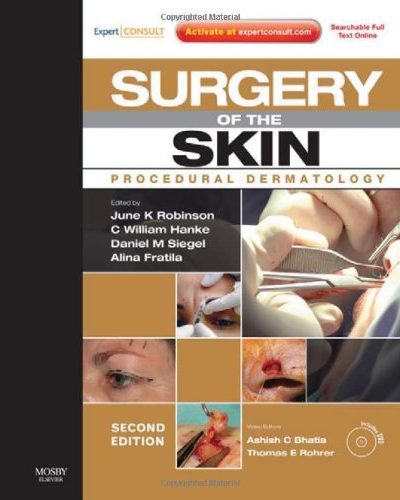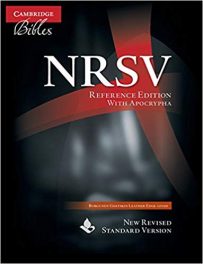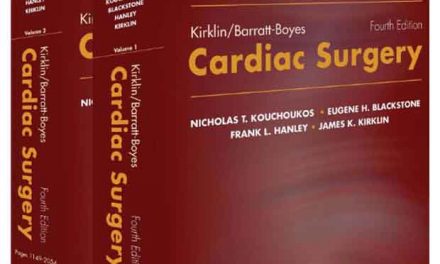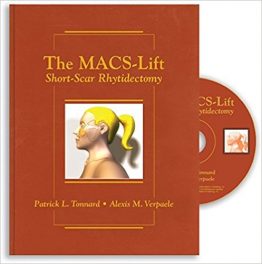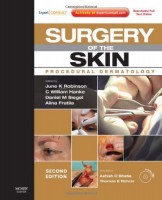 Editors: June K. Robinson, MD; C. William Hanke, MD; Daniel M. Siegel, MD; and Alina Fratila, MD.
Editors: June K. Robinson, MD; C. William Hanke, MD; Daniel M. Siegel, MD; and Alina Fratila, MD.
DVD Editors: Ashish C. Bhatia, MD: and Thomas E. Rohrer, MD
Publisher: Mosby-Elsevier – 850 pages
Book Review by: Nano Khilnani
The editors point out that important strides have been made in dermatologic surgery in the last five years alone. So this field has evolved significantly in that relatively short period of time, and the changes are reflected in the expanded size of the chapters. Still, a lot of additional content was placed online, otherwise this would have become a two-volume text.
The entire content of this book can be found online, and to save you time, all that content is searchable. Read and follow the instructions below to go online.
You can activate your access at www.expertconsult.com. Do the following:
1. Register
- Visit www.expertconsult.com
- Click Register Now
- Fill in your user information
- Click Create Account
2. Activate your book
- Scratch off your Activation Code on the sticker found on the inside front cover of your book
- You’re done! Click on the book’s title under My Titles
For technical assistance, email: [email protected] or call 800-401-9962 (inside the U.S.) or 1-314-995-3200 (outside the U.S.).
This book covers a lot of ground within its 49 chapters laid out on 850 pages. That is too many chapter titles to list here, so we provide you here just a brief overview by naming its five Parts. Instead, to help you browse, we provide you below a list of topics on the DVD that comes with this book.
- Part One: Basic Surgical Concepts
- Part Two: Essential Surgical Skills
- Part Three: Aesthetic Surgical Procedures
- Part Four: Special Procedures
- Part Five: Office-Based Surgery: Physical and Regulatory
One hundred and seven teachers and practitioners in dermatology and related specialties, including the editors, wrote the 49 chapters that constitute this sizable textbook. They are mainly from the United State, but also from: Canada, Germany, India, Spain, Sweden, Switzerland, and the United Kingdom.
And 12 people – eleven physicians and one photographer – provided video material online and that form part of the DVD that comes with this book in its inside back cover. The contributors are from the United States, Canada, and Sweden.
Below is a list of topics on the DVD found on the book’s outside front cover.
- Anatomy and Procedural Dermatology
- Anesthesia and Analgesia
- Instruments and Materials
- Wound Healing and Its Impact on Dressings and Postoperative Care
- Electrosurgery, Electrocoagulation, Electrofulguration, Electrodessication, Electrosection, Electrocautery
- Cryosurgery
- Skin Biopsy Techniques
- Suturing Technique and Other Closure Materials
- Complex Layered Facial Closures
- Hemostasis
- Ellipse, Ellipse Variations, and Dog-Ear Repairs
- Random Pattern Cutaneous Flaps
- Axial Pattern Flaps
- Skin Grafting
- Scar Revision
- Soft Tissue Augmentation
- Chemical Peels
- Implants
- Botulinum Toxins
- Liposuction
- Autologous Fat Transfer: Evolving Concepts and Techniques
- Laser Hair Removal
- Microdermabrasion and Dermabrasion
- Laser Treatment of Tattoos and Pigmented Lesions
- Energy Based Treatment of the Aging Face for Skin Resurfacing
- Laser and Light Treatment of Acquired and Congenital Vascular Lesions
- Sclerotherapy of Varicose Veins
- Endovenous Ablation Techniques with Ambulatory Phlebectomy for Varicose Veins
- Minimum Incision Face Lift
- Vertical Vector Face Lift with Local Anesthesia
- Blepharoplasty and Brow Lifting
- Rejuvenation of the Neck Using Liposuction and Other Techniques
- Keloid Management
- Leg Ulcer Management
- Nail Surgery
- Repair of the Split Earlobe, Ear Piercing and Earlobe Reduction
- Large Equipment and Design of the Surgical Suite, Including Monitoring Devices
Here we give you an idea of how topics are covered in the chapters of this book. As an example let’s take a look at chapter 44 entitled Mohs Micrographic Surgery and Cutaneous Oncology, presented on pages 711 through 734.
If you are familiar with the SQ4R study method (Survey, Question, Read, Recite, Write, Review) you can use it to study this chapter.
As you begin to Survey the chapter’s contents, you will find the following:
- A Summary box on the top left that provides a list of topics covered in the chapter
- An Introduction that gives you a brief overview of what Mohs surgery is
- A History (highlighted box) of this type of surgery and its originator.
- On the second page, a photo of a jar of zinc chloride fixative
- A chart entitled Excision for Mohs micrographic surgery on the second page
- A chart entitled Conventional excision, and a table named Indications for Mohs surgery listing types of tumors and examples of such tumors, both on third page.
- The fourth page of this chapter provides you the first topic of study – Preoperative Preparation – after the Introduction.
- The fifth page presents a box entitled Preoperative Evaluation, and a photo of a woman with a lentigo maligna – a tumor that needs to be excised.
- Various other topics of study follow, accompanied by boxes, charts, drawings, photos, tables and other visual aids.
- The References are the last section of this chapter, as with all chapters. In this chapter, a large number of materials and sources – 165 – are listed.
Once you have browsed through all this material, you have completed the Survey portion of your SQ4R study method, and you are ready to begin your Question portion of your studying activity.
It is suggested that you write down the questions that come to your mind so you cover everything. Since the chapter’s title is on Mohs surgery, you can ask yourself and write down, “who was Mohs, what exactly is this type of surgery and how is it different from other surgeries? You can then read up on its origins and other information in the History box we name above.
In the third portion of the SQ4R study method, you begin to read, first the Summary box, then Introduction, and whatever other topics that follow in the chapter. You will Read as much or as little of this chapter as the amount of time you have allocated for your study session.
It is important to understand and remembers what you are reading, so that you can retain in your head an adequate amount of information for test-giving, or questioning by another individual in your study group, if you have one. In this chapter, you need to read not only the Summary box, and the Introduction, but also the topics that follow, which we name below. Also, read the subtopics of each topic.
- Preoperative preparation
- Technical Aspects
- Optimizing Outcomes
- Postoperative Care
- Cutaneous Oncology
The fourth or Recite portion is the most effective part of this study method, because that will help you remember and recall the material, which is important preparation for taking tests successfully, as well as for later professional practice. This is where “the rubber meets the road,” so to speak.
Here, you read the important points in each topic and subtopic and repeat them, speaking out loud to yourself or a companion with you. For example, you can start by at least naming the topics of the chapter we have named above; then the names of the subtopics. You can also repeat to yourself the important key terms you learned in the chapter.
For example, you can recite the types and examples of tumors named in Table 44.1 on page 713. Under “high risk for local recurrence and / or metastasis,” you can recite all the examples provided therein. We cite first six of those below:
- Sclerosing (morpheaform), infiltrative, micronodular, metatypical subtypes of basal cell carcinoma
- Perineural Basal cell carcinoma or squamous cell carcinoma
- Keratoacanthoma
- Bowen’s disease
- Malignant melanoma
- Merkel cell carcinoma
In the fifth or Write portion of this study method, you can note down the key terms and major points you found in each topic of the chapter. Check the information in the text before writing it down, otherwise you will be remembering the wrong information. For example, you can write down summaries of the bullet points in the History of Mohs micrographic surgery on the first page of the chapter.
In the last or Review portion, go over what you have written down as notes from all topics and subtopics of the chapter, as well as what you have gleaned from seeing all the visuals. There are many websites that describe the SQ4R study method, but one of the best I have found is this one:
http://www.fastol.com/~renkwitz/sq4r_study_method.htm
This is a very valuable book and online resource on surgery of the skin with extensive coverage, having 850 print pages with more than a thousand full-color photos. There is a lot of additional interactive information online at www.ExpertConsult.com. Besides the book and the website, you also get a DVD that provides surgical videos from the surgeon’s eye view.
The book’s editors have done an outstanding job writing, compiling, editing, and presenting the information. And the more than 100 authors who contributed material – sharing their knowledge, experience, and insight in this excellent resource – are to be congratulated for this medical gem. This is definitely a must-have for students and practitioners of dermatology.
Editors:
June K. Robinson, MD is Professor of Clinical Dermatology in the Department of Dermatology at Northwestern University Feinberg School of Medicine in Chicago, Illinois.
C. William Hanke, MD, MPH, FACP is Visiting Professor of Dermatology at the University of Iowa Carver School of Medicine in Iowa City, Iowa. He is also Clinical Professor of Otolaryngology, Head and Neck Surgery at Indiana University School of Medicine in Indianapolis, Indiana.
Daniel Mark Siegel, MD, MS (Management and Policy) is Clinical Professor of Dermatology, and Director of the Procedural Dermatology Fellowship at State University of New York Downstate Medical Center and College of Medicine in Brooklyn, New York. He is Senior Surgeon at Long Island Skin Cancer and Dermatologic Surgery in Smithtown, New York.
Alina Fratila, MD is Assistant Professor in the Department of Dermatology at Carol Davila University in Bucharest, Romania; and Medical Director at Jungbrunnen-Klinik Dr. Fratila GmbH in Bonn, Germany.
DVD Editors:
Ashish C. Bhatia, MD, FAAD is Assistant Professor of Clinical Dermatology in the Department of Dermatology at Northwestern University Feinberg School of Medicine in Chicago, Illinois. He is also Medical Director for Dermatologic Research in the Department of Clinical Research, DuPage Medical Group; Director of Dermatologic, Laser, and Cosmetic Surgery at The Dermatology Institute in Naperville and the DuPage Medical Group in Naperville, Illinois.
Thomas E. Rohrer, MD is Clinical Associate Professor in the Department of Dermatology at Boston University in Boston, Massachusetts; and Director of Mohs Surgery at Skin Care Physicians of Chestnut Hill in Chestnut, Massachusetts.

